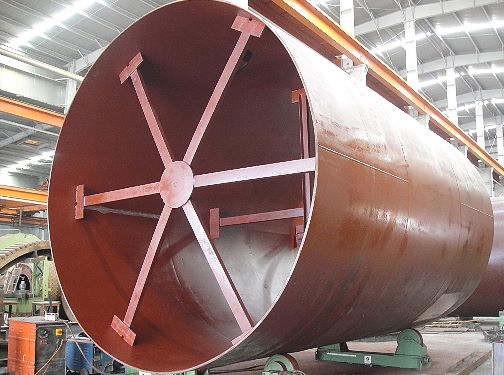Kiln Shells Manufacturers India – KILN SHELL MANUFACTURERS
Ashoka one of the leading kiln shells Manufacturers In India, rotary kiln is basically a rotating inclined cylindrical shaped furnace in which solids are heated to a point when a chemical reaction takes place by either a dry and wet process. Rotary kilns are widely used in the production of cement, metals, chemical industry, construction materials, sponge iron, refractories, petroleum coke, alumina, gypsum etc.
The Rotary Kiln is basically a rotating inclined cylinder which is fired from one end to generate heat along its length. Rotary Kilns are normally direct fired and lined with refractory material to protect the steel shell, reduce radiation losses and transfer heat to the material. All kilns are heat exchangers and the heat is transferred in a variety of ways such as radiation, convection and conduction. Various fuels can be used to fire the kiln including ground coal, gasses, petroleum coke, fuel oils etc. depending upon the economics of consumption of the respective fuels.
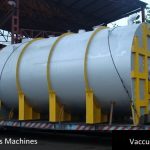
Kiln Shell Manufacturers India Working Principal
The Rotary Kiln is basically a rotating inclined cylinder which is fired from one end to generate heat along its length. Rotary Kilns are normally direct fired and lined with refractory material to protect the steel shell, reduce radiation losses and transfer heat to the material. All kilns are heat exchangers and the heat is transferred in a variety of ways such as radiation, convection and conduction.
Various fuels can be used to fire the kiln including ground coal, gasses, petroleum coke, fuel oils etc. depending upon the economics of consumption of the respective fuels. One effective way of transferring heat is by gas radiation from the hot flame and a smaller amount of transfer from refractory. The hot bricks transfer by radiation to material and also by conduction to the charge. As the kiln rotates the material processed travels towards the discharge end due to the inclination of the kiln. The form of the material modifies from the entry till the discharge.

General Design Features
A typical Rotary kiln is cylindrical shell, slightly inclined from the horizontal and supported on two or more tyres stations (also called riding rings), which rest on supporting rollers. One of the tyre’s is fixed axially by a set of thrust rollers to counter the thrust load during its movement and thereby preventing shifting of it from its axis. The drum assembly along with the tyres are rotated by a girth gear and pinion arrangement.
Ashoka India manufacturers the most common prime movers are gear reducers. Gear reducers are used when reduced speed or increased torque is required. Gear reducers can be designed differently for applications. The girth gear is mounted over the shell on gear support base, assembled on a section of the shell away from the shell end where high temperatures are encountered. To compensate the thermal expansion the girth gear is mounted on tangential spring plates attached to the shell. The driving pinion is mounted on the output shaft of a worm / helical gear unit. Bearings are in every moving piece of equipment. Bearings are also uniquely designed for there application. The most common bearings are the anti-friction or roller bearings. These bearings have become standardized and perform excellent in almost any condition. Anti-friction bearings do not work well with heavy loads. Different kinds of bearings are used on the kiln with high loads. The shell diameter and length are generally designed to suit specific products and production capacities. Solids retention time in the kiln is an important factor and is set by proper selection of diameter, length, speed, slope and the internal design.

Sealing Arrangement
A seal is essential at each end to prevent ambient air from entering the process. Air leakage can have varying effects on the process. Sometimes it reduces efficiency and sometimes it can create unsafe or unstable conditions.
To maintain proper control of the volume and temperature of gases flowing through the kiln it is necessary to limit the leakage of the cold air in the kiln particularly where the rotating shell enters the feed and the discharge end hoods. Seal rings are provided for this purpose. Various types of seal rings are used which include spring loaded types, where two finished metal surfaces are in contact under spring pressure. The sealing segments require regular adjustment and replacement. kiln Shells Manufacturers India.
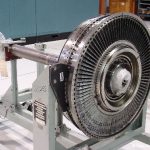
Refractory Lining
Because of high temperature and abrasive material wear resistant lining is required which is what we call refractory. Refractory is installed as solid blocks that fit in to different areas tightly in a circumferential formation.
There are many types of bricks in different compositions and have different properties such as insulation value, maximum temperature bearing capacity and resistance to wear. Areas where brick cannot be used a liquid refractor called castables are used with anchor support. Kilns may also have special insulation material under the brick and this extra layer helps to reduce shell losses. kiln Shells Manufacturers India.
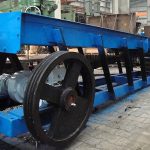
Firing System
The burner system is an important and an integral component of a rotary kiln system to optimize the combustion of fuels so as to release heat in the kiln. Safety considerations, ease and flexibility of operation, product quality, energy efficiency, maintenance costs, and the environmental impact of the products of combustion are some of the most critical areas that a kiln operator must evaluate in selecting a kiln burner.
In a rotary kiln application heat is injected directly at the end of the kiln. Firing systems could use any kind of fuel and be of any size. The burner is where the fuel is ignited. The fuel could be mixed with air before or in the burner. The flame temperature is a factor of fuel type, fuel/air ratio, and other burning conditions. kiln Shells Manufacturers India.

Dust Collection Arrangement
Exhaust gases from an oil fired kiln shells contain certain proportion of very fine dust which becomes entrained in the air stream while in contact with materials being calcined. A dust collector of high efficiency cyclone type is used as a pollution control measure.
Even the most efficient cyclone type dust collectosr will not collect all the dust. Ashoka India provides very fine particles which escape the dry collector may be recovered by mean of a wet collector in the form of sludge or alternatively by means of a bag filter.
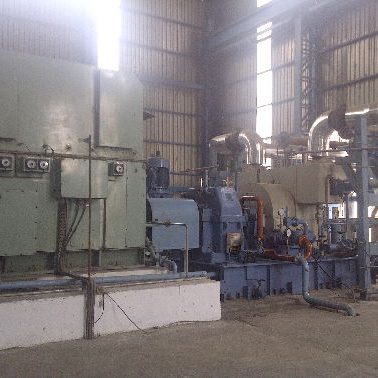
| Specification (meter) | φ2.8/2.5×44 | φ3×48 | φ3.2×50 | φ3.3×50 | φ3.5×54 | φ4×60 | φ4.3×64 | φ4.8×74 | φ5.0×74 |
| Production(t/d) | 300 | 600-700 | 1000 | 1200 | 1500-1800 | 2500 | 3500 | 5000 | 6000 |
| rake of Kiln(%) | 3.5 | 3.5 | 3.5 | 4 | 4 | 4 | 4 | 4 | 4 |
| Number of bearings | 3 | 3 | 3 | 3 | 3 | 3 | 3 | 3 | 3 |
| Primary Power Rating (kw) | 55 | 100 | 160 | 160 | 220 | 315 | 400 | 630 | 710 |
| Reduction Ratio
(For Gear Reducer) |
49-63 | 50 | 40 | 40 | 28 | 22.4 | 31.5 | 42.226 | 28 |

